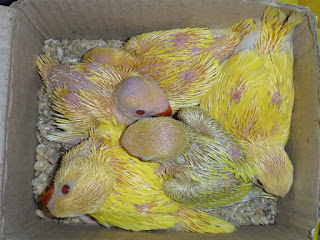Inbreeding: Why & Why not?
Inbreeding is the breeding together of closely related birds. Pairing of siblings, parents to offspring, grand-parents to grand children, half-brothers to half sisters are all examples of inbreeding. Beginners in breeding, often ask why this practice should be avoided when expert breeders regularly use inbreeding to establish new mutations and desirable traits in their lines. This post will discuss why inbreeding should generally be avoided and why it becomes useful for expert breeders. You don't need to be an expert in genetics to understand this article. I will only make use of the concept of dominant and recessive traits to explain the pros and cons of inbreeding. A recessive trait (feature) is one that will not appear in the children unless it is carried by both the parents. Both parents must pass on the same recessive gene to the child for it to become visible. To learn more, please read Dominant and Recessive Genes in my Genetics Tutorial . Most undesirable features ar
